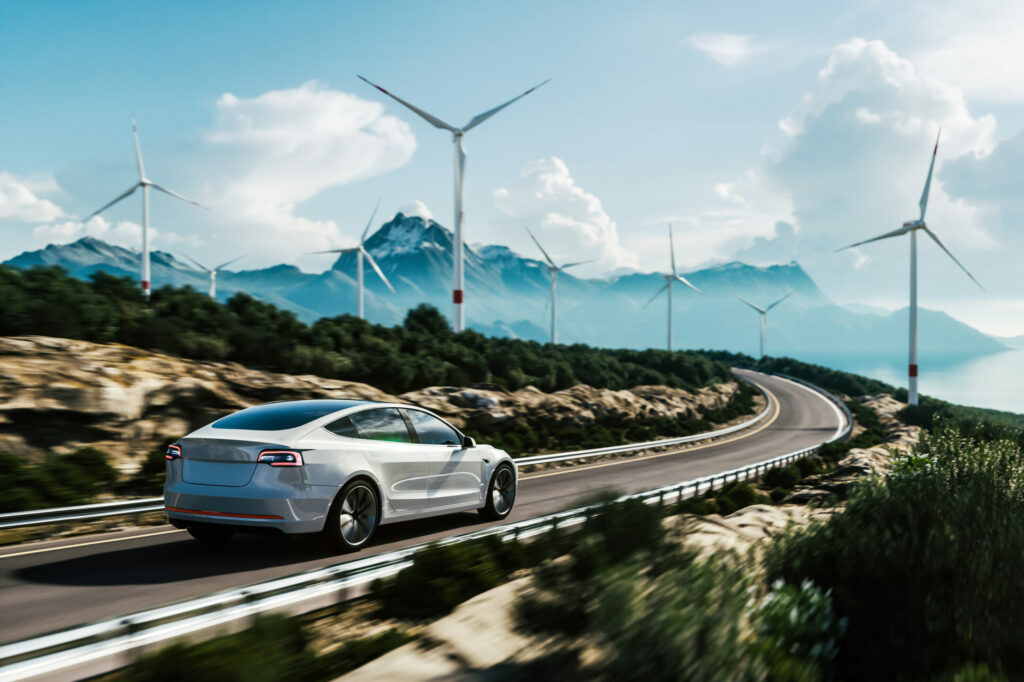
In this series, Tech For Good gets a 10-minute glimpse into new technologies. This month we sit down with Martin Kochman, VP, Head of Customers and Industries at Hitachi Vantara, to find out more about the world’s largest electric vehicle trial
TFG: How important are electric vehicles in the race towards net-zero?
Martin: EVs alone will never be the universal, cure-all solution for reaching net-zero, but they do demonstrate what’s possible when it comes to tangible and sustainable low-carbon alternatives. With businesses buying 58% of all new vehicles in the UK, commercial vehicles play a significant role in determining the speed of the transition to low-carbon transport. The accelerated adoption of commercial EVs will save 2.7m tonnes of CO2 in the UK alone, which is equivalent to London’s entire bus fleet running for four years.
TFG: You are leading Hitachi Vantara’s Optimise Prime programme. What is the goal of the project?
Martin: Optimise Prime was launched in 2019 and is the world’s biggest electric vehicle trial. It’s led by Hitachi Vantara and UK Power Networks, bringing together a consortium of leading power, technology, fleet, and transport companies to test and implement the best approaches to EV rollout for commercial enterprises. The goal of the project is to pinpoint and develop practical ways to overcome the challenges that prevent many of the UK’s biggest commercial vehicle operators from making the switch to EVs. The project uses large, real-time datasets and Internet of Things (IoT) technologies to identify the demands of running electric fleets, with these insights then shared with others to enable them to develop the solutions that could cater to them. An example of this is for it to be possible to charge EVs efficiently outside the electricity network’s peak times ahead of the EU’s ban on petrol, diesel, and hybrid vehicles by 2035.
TFG: Can you speak about some of the programme’s findings?
Martin: There are currently over 3,000 vehicles involved in the trial, with results set to be announced later this year. Our work to date suggests elective vehicles are unlikely to create a power-demand crisis but could reshape the load curve. The most significant effect of this will be an increase in evening peak loads, this will be when people plug in their EVs when they return home from work. This load curve will lead to challenges at a local level as the regional spread of EVs will vary significantly. Some potential solutions to these issues have been deciphered as providing better load management, including flexible tariffs, local energy storage solutions and centrally coordinated charging management. In addition to peak-load increases, the highly volatile load profiles of public fast-charging stations will require additional system balancing.

TFG: What is the main challenge that comes with transitioning to EVs?
Martin: Making the transition to new and clean forms of transportation requires a significant investment in time, skills, and funding to be a success. To avoid any costly mistakes, accurate data is needed to demonstrate to teams exactly what’s needed to make clean forms of transportation – such as EVs – a reality. For example, the number and location of charging points in towns and cities has always been a pain point for organisations looking to electrify their vehicles. By tracking metrics like how often vehicles need charging and how long they remain charged for, town planners and fleet providers could gain the insights needed to deliver charging capabilities in the most beneficial way.
TFG: Why was it important that the dataset was made publicly available?
Martin: There’s no doubt that meeting environmental targets, such as the UK government’s commitment to end the sale of new petrol and diesel vehicles by 2030, will require a collaborative effort. This requires companies and organisations to work together to share the knowledge and tools needed to surface actionable insights. Collaboration has been key in the ongoing success of Optimise Prime, with the backing of UK energy regulator Ofgem, UK Power Networks, Royal Mail, Centrica, Uber and Scottish and Southern Electricity Networks being crucial in collecting and analysing data. These collaborations allow the project to be scaled further, with the vast amount of detailed data allowing data scientists to assess where there are gaps in effectiveness, such as the various locations of charging points. This data is then shared back with the power and fleet providers, who will benefit from lower-cost smart charging solutions by feeding into UK Power Network’s in-house distributed energy resource management platform.
TFG: Where do you see the EV sector going in the next five years?
Martin: While EVs have become increasingly mainstream over the past decade, I expect the fast-approaching deadline to stop the sale of petrol and diesel cars by 2030 in the UK will impact fleet providers’ purchasing habits as they plan for the future. Even commercially, a greater awareness of the charging infrastructure required to make owning an EV a viable option for consumers is gaining traction. It’s an exciting time and the next five years could very well define the future of widespread EV rollout.


